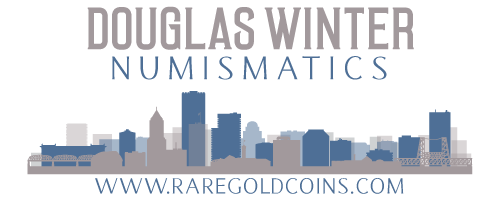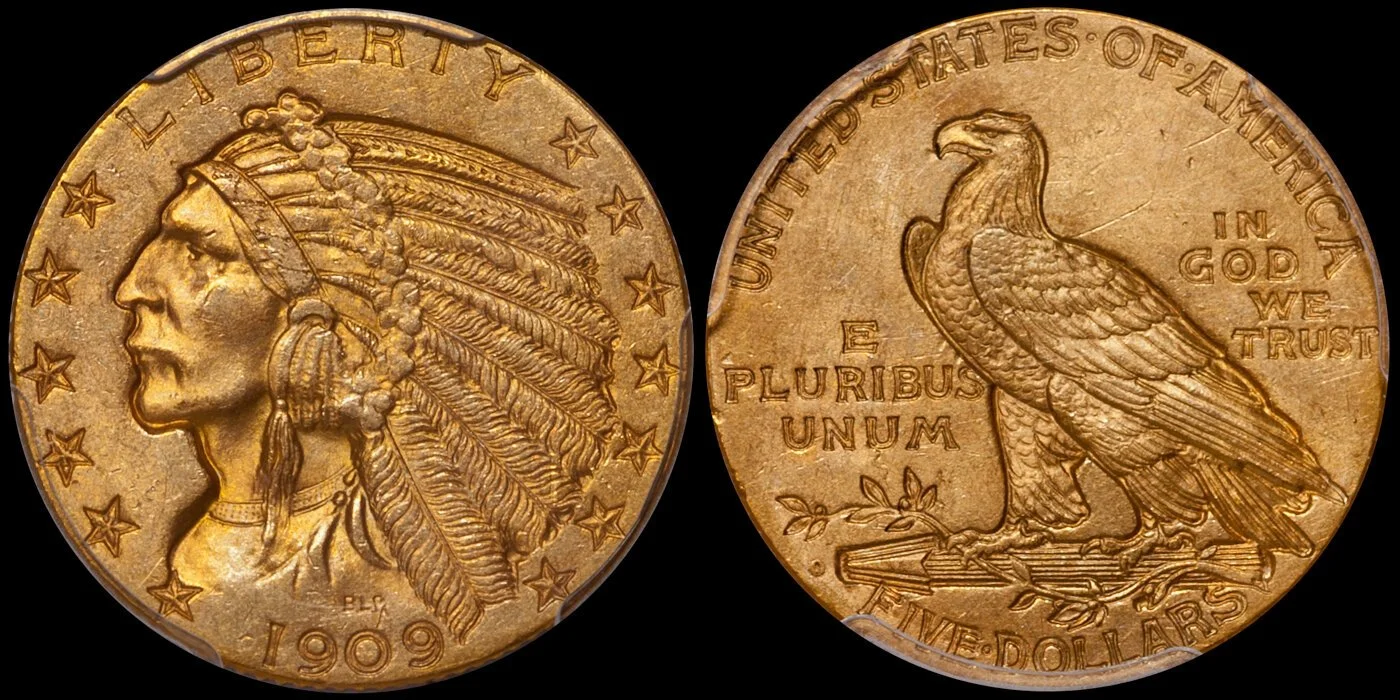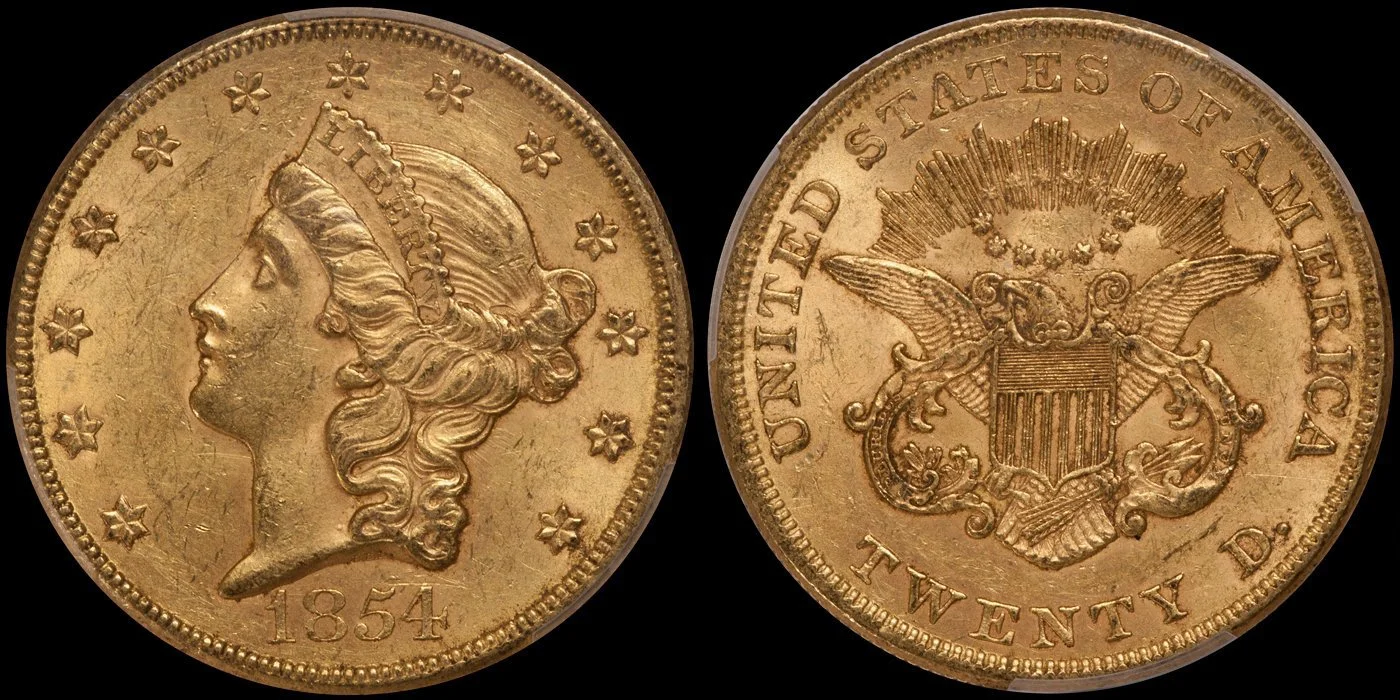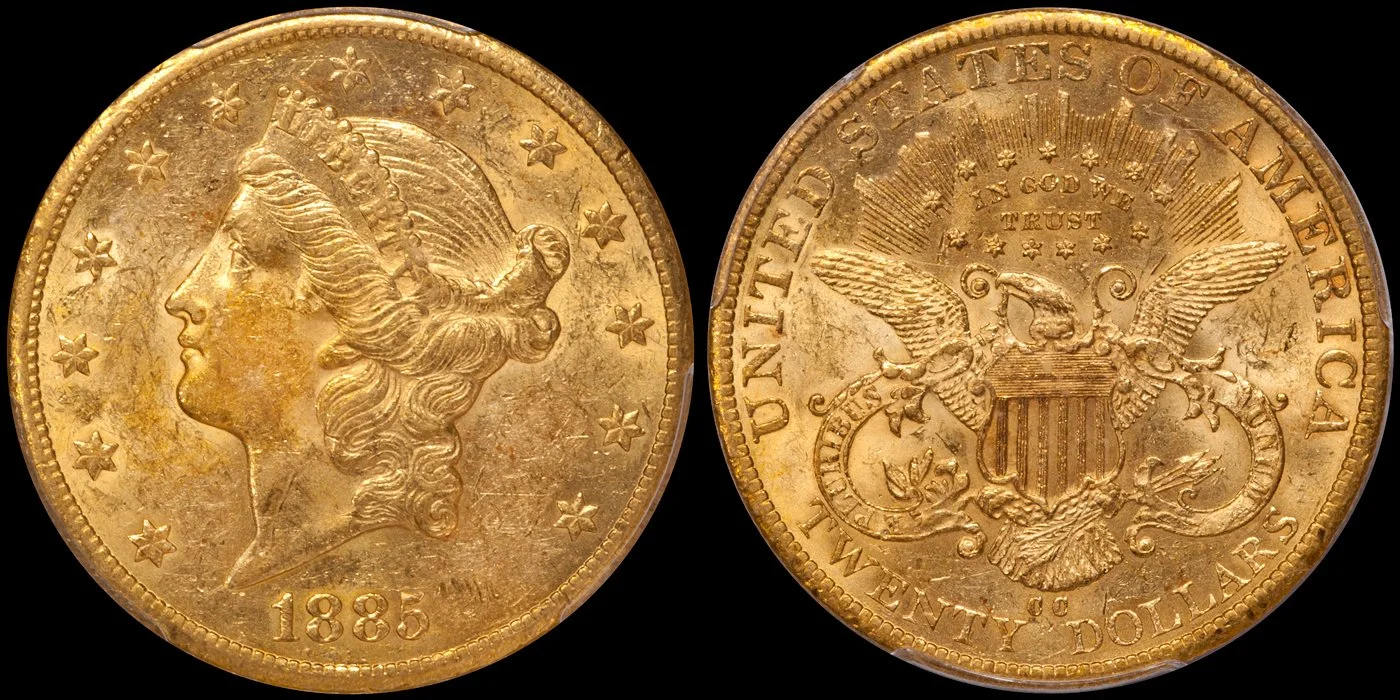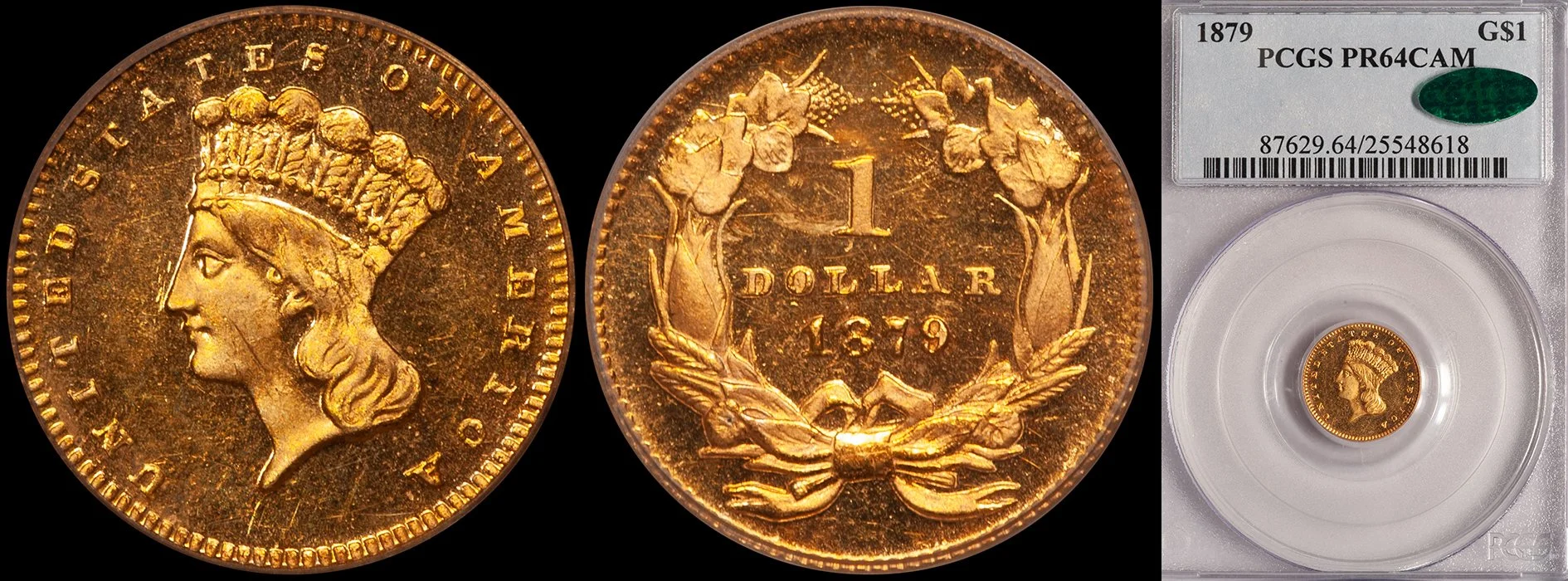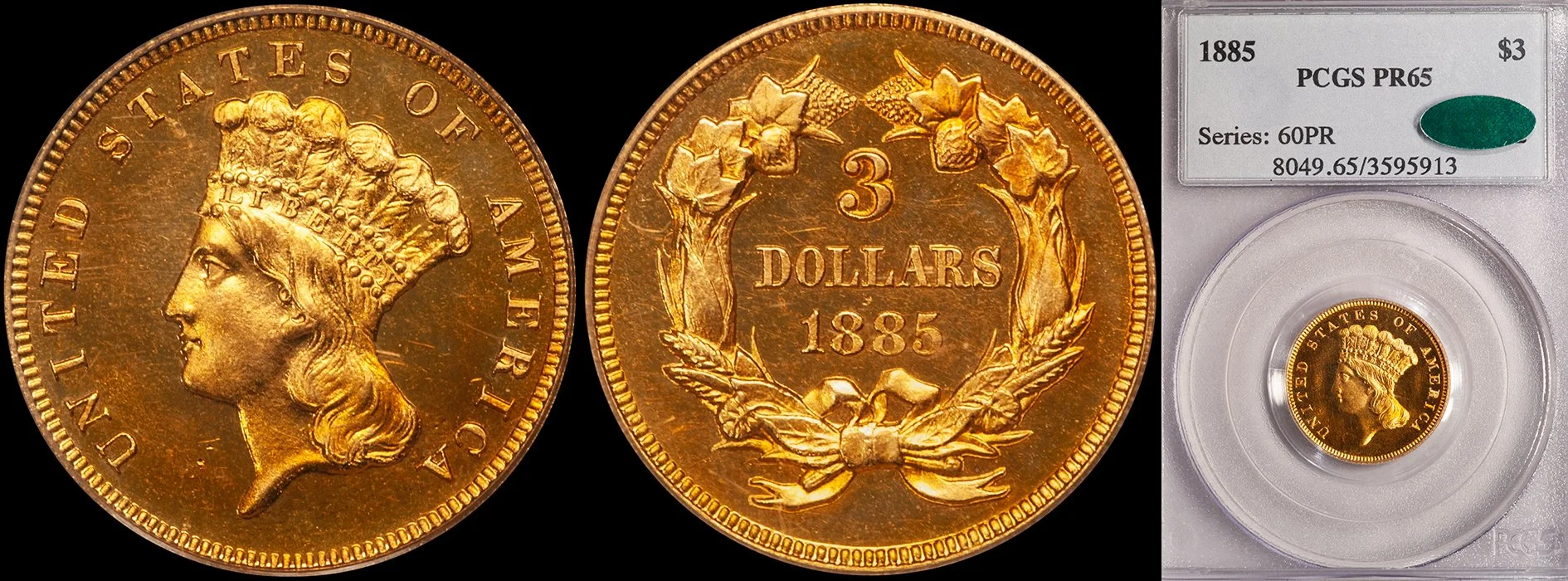The Annual DWN What's Hot / What's Not List: 2024 Edition
/For the past decade+, I’ve written this article or a variation of it to summarize my personal experience with the coin market during the last 12 months. As I have pointed out at the beginning of each of these end-of-the-year rambles, the coin market is not one size fits all. While DWN sold the heck out of one specific area, Dealer X might have had middling success with the exact same coins.
My overall feeling is that most specialized dealers had good but not great years. I had an extremely strong to exceptional year, but there were periods I had in which the phone rang infrequently and certain coins that I thought would blow people’s minds simply blew. Despite these occasional slow periods, at the end of every month I would shake my head and say some variation of the following: “January/February/March, etc. was a lot stronger than I expected.” While certainly not at Covid levels in terms of velocity, my good coins generally sold quickly and painlessly.
If you collect Buffalo Nickels or Bust Dollars, I still invite you to read this but I am deliberately ignoring you. As my URL not-so-succinctly states, DWN deals mostly in rare gold coins. Not that we don’t handle the occasional badass silver coin (we recently sold a lovely 1798 silver dollar in an ancient NGC/CAC MS62 “fatty” holder and the Norweb 1878-S half dollar) but when push comes to shove, I’m a gold guy; specifically a pre-1933 gold guy with an emphasis on business strike 19th century branch mint issues.
So, that’s my story and I’m stickin’ to it.
Here were a few areas which I thought were strong in 2024. Please note that this does not mean that prices rose in this specific market area. I track coins based on demand and how quickly they sell off my website, as well as the speed at which they sell. Literally every coin I had in certain series sold within 48 hours of being added to my site, as long as they met DWN Eye Appeal Standards. More times than not, they had multiple inquiries as well.
1850 $5.00 Moffat, PCGS EF45 CAC, Old Green Holder
Pioneer & Territorial Gold
I’ve been an active participant in this market area for years, but in the last four or five years I’ve really stepped-up my game and have gone for a swim in the deep end of the pool. I didn’t always have that much competition for the really good stuff except from the usual suspects. This changed in 2023/24 as the publication of the long-awaited second edition of the Kagin book finally saw the light of day. As expected, this book stimulated the market, and the sale of the Buffalo Bayou Collection by Heritage at the beginning of 2022 enabled new collectors to have a shot to add extremely scarce issues (which might only come for sale once or twice per decade) to their sets. There are a significant number of players in this market—almost all in thrall to coins which are PCGS/CAC—and they are not bashful when it comes to paying-up for the right (and sometimes the wrong) coin.
While the six and seven figure rarities have seen record prices when they are offered, it’s the $3,000-30,000 “common” issues that fly off my site.
An example: I recently sold a PCGS/CAC/OGH EF45 1850 Moffat $5. I listed it on my site at $8,000, and received literally eight or nine orders for it before I just took off my site so I wouldn’t have to disappoint yet another collector.
Why?
This coin cheeked a lot of boxes: it was affordable, it had all the bells and whistles (i.e., an old green holder with a brand spankin’ new CAC sticker), and—most importantly—it was really pretty.
I’m surprised that no major Pioneer collections are coming up for sale as the timing seems ideal for someone who has a nice holding of these coins (and has held them for enough time to cash in on this currently hot market).
1853-D Large D, PCGS AU53, ex Fairmont
Dahlonega Gold
There has never been a period of time in my long career that D mint gold hasn’t been a good seller. But you have to remember that from 1995 to 2020, prices barely rose. When they did, it tended to be affordable collector coins, like a nice EF45 1839-D quarter eagle or a sharp, cosmetically appealing VF30 common date half eagle that saw the greatest increases in price, based on percentages.
Then 2022-23 came and all hell broke loose. The Stack’s Bowers 2022 ANA sales included numerous terrific Dahlonega mint issues in a wide range of grades (literally from VF to Choice Uncirculated). Next were the Auraria Collection (sold in a DWN Concierge Sale™), and a group of Condition Census half eagles from my personal collection.
And let’s not forget the fourth edition of Gold Coins of the Dahlonega Mint, 1838-1861 which I released in 2023.
The 900 lb. Gorilla in the Room is, of course, Fairmont. This massive hoard of US gold coins contained around 250-300 Dahlonega half eagles, in grades ranging from VF to MS61/62. Had this hoard contained unmanageable numbers (such as 500-1000 common date half eagles in VF-EF, or 15 examples of a specific date in MS62-MS64) I’m not certain that the market had the depth to absorb these, although I don’t doubt that a fantastic marketing company such as RCTV or J+M Bullion could sell 500 1854-D half eagles in VF/EF in one or two fell swoops. But it was able to ingest 250-300 coins (95% of these were priced at $15k or less) with ease.
At 2020’s price level of $2,500-3,000, a nice PCGS EF common date Dahlonega half eagle represented fantastic value.
At 2025’s price level of $5,000-5,500 for the same coin, there doesn’t appear to be much more room for prices to rise.
Time will tell if these new prices are sustainable, and if we might even see a really nice common date PCGS/CAC EF45 selling for $7,500.
1839/8, Type of 1838, $10.00 PCGS AU58 CAC
Beautiful AU58 Coins in All Shapes and Sizes
Here’s my 15 second take on why true AU58 coins rock.
Grading is a continuum, and a real AU58 is at the peak of a range which goes from 50.0 to 59.9. An MS60 or an MS61 are at the base of a range which goes from 60.0 to 70.
Thus, certain nice AU58 gold coins are rewarded on account of their positive attributes, while virtually every MS60 to MS61 (and even a sizable percentage of 19th century coins graded MS62) is penalized for its negative attributes.
In earlier market cycles, it wasn’t unusual to see price guides at $15,000 for an AU58 and $45,000 for the same issue in MS62.
The establishment of CAC and 15 years of data from this company have taught many collectors that, for numerous issues, AU58 coins are very scarce or even rare and the price ratios for AU58s vs. MS61s have been flipped. An excellent example of this is seen on a common date Heraldic Eagle five dollar where an 1802/1 in PCGS/CAC AU58 can be worth as much as $20-25k, while a scrubby NGC MS62 is a hard sell at 15-18k.
As strong as AU58 coins are, any AU58+/CAC coins I’ve had in stock in 2024 were pieces I could have sold multiple times, were it was a 1795 $10 or a 1925 double eagle.
1870-CC $5.00 PCGS VF20
1870-CC Gold
2024 was a huge year for 1870-CC gold coinage.
Just a single 1870-CC half eagle sold at auction in 2024, so the sample size is too small to make any pronouncements.
1870-CC eagles included a curiously red example in PCGS EF40 at $111,000 (Stack’s Bowers 11/2024: 3157), and a commercial quality NGC EF45 at $114,000 (Stack’s Bowers 8/2024:3413). The most important sale, however, was a PCGS AU55 which crushed the previous auction high for an 1870-CC $10 in this grade when it was purchased for $420,000 as Stack’s Bowers 2024 ANA: 3412. The 2023 auction sale of the highest graded 1870-CC eagle—a lovely PCGS/CAC AU58—for an amazing $1,080,000 no doubt added at least $150,000 to the price realized for the PCGS AU55.
In the late 2010s, the market for 1870-CC double eagles slumped and there were opportunities for me to buy PCGS examples in EF for $225,000-250,000. I thought they were bad values at those prices…so how do you think I feel now about the exact same coins selling for $500,000 and up?
In 2024, we saw a continuation of the fiery hot market for 1870-CC $20s with a PCGS AU50 selling for $840,000 (Stack’s Bowers 4/2024: 4365), and a PCGS AU55 fetching $1,440,000 (Stack’s Bowers 2024 ANA: 3198).
Can these price levels be sustained? We will no doubt see a number of 1870-CC double eagles for sale in 2025 and I will follow the prices they achieve with interest.
Here is my take on areas in the coin market which qualified as “not not” in 2024. If you collect any of these types, by all means continue to do so.
1909-O $5.00 PCGS MS62 CAC
Better Date Indian Head Half Eagles and Eagles
The Fairmont Hoard has impacted 20th century issues more than it has 19th century issues. The reason is obvious: a coin dated 1852 circulated sixty years longer than one dated 1912. I am very confident that the Fairmont coins represent a snapshot of what gold coins were still in circulation (or in American banks) by the time of the gold recall in 1933. And one thing that appears to have been very plentiful around 1932-33 were Indian Head half eagles and eagles.
Unlike series such as Dahlonega half eagles, there is not enough collecting depth in a series such as Indian Head half eagles to survive a Fairmont Onslaught.
Dates such as 1909-O, 1911-D, and 1912-S through 1914-S have lost around 10-20% of their value in grades MS61 through MS63 from 2021 to 2024—and this is in a market in which gold has risen over $1,000 since it skidded down to the $1610-1620 range in October/November 2022.
In PCGS MS61, populations for the 1909-O have gone from 29 with 50 finer in 2021, to 38 with 61 finer in 2024. That’s 20 new coins and even if we weed out a few due to resubmissions, that’s still around 15 coins. There are not 15 collectors who care about this date in any grade, let alone in MS61 where a nice quality PCGS/CAC coin will set you back $30k+.
Fairmont has not had as significant an impact on better date Indian Head eagles in MS62 through MS64, as these appear not to be as plentiful.
1854 Large Date $20.00 PCGS MS60 CAC, ex Fairmont
Type One Double Eagles
It pains me to include this series as it is among my favorite areas of all US gold coinage. The sad reality is that there are just too many common date and slightly better dates from Fairmont.
The more common New Orleans issues (1850-O through 1853-O) have actually held their values reasonably well. As an example, there were four PCGS AU55 1851-O double eagles sold at auction in the second half of 2024, with prices realized between $7,200 and $7,800. Pre-Fairmont, these were worth around $9k, and the quality of the typical coin was way below that seen on the coins from the hoard.
Two Philadelphia issues were totally slammed this year: the 1853/’2’, and the 1854 Large Date. The former is a “fauxverdate” which was a bad deal when AU55s were worth $10,000. Today, this variety is a hard sale at $5,000 in this grade but for a good reason; it’s not a damn overdate!!! The 1854 Large Date is a legitimate variety but it appears that most collectors are content to fill the 1854-P hole in their set with a cheaper 1854 Small Date. Pre-Fairmont, this was an $11,000-13,000 coin in AU55. Today, you’ll be able to buy a nice non-CAC crusty example from the hoard for less than $7,000.
The key date 1862 has retained much of its pre-Fairmont value but for an obvious reason: it’s a Civil War issue and this gives it a substantially larger pool of buyers.
1911-D $20.00 PCGS MS65 CAC
Generic $20 Libs and Saints in MS65 and Lower
As I write this, the spot price of gold is a bit over $2,600, with melt value of around $2,520 for a US double eagle. A PCGS MS64 Saint will cost you around $2,700, and an MS65 around $2,800. Remarkably, a few weeks ago, the premiums were even slightly smaller.
This is the result of huge supplies coupled with limited demand. For most investors, a bullion coin with no significant numismatic premium is a better fit than an MS65 common date Saint.
Unless a large marketing firm is able to sell thousands of generic double eagles is a short period of time, I don’t see premiums rising any time soon.
1885-CC $20.00 PCGS AU58 CAC
Type III Carson City Double Eagles
Enough better-date Carson City double eagles entered the markets in the last three years that it exposed a Dirty Little Secret about CC twenties: this segment was not as deeply collected as many of us thought. As a result, the four scarce dates of this type (1878-CC, 1879-CC, 1885-CC, and 1891-CC) all took major hits in value during 2024.
Here are a few examples:
In AU55, a reasonably nice PCGS/CAC graded 1878-CC brought $26,400 as Stack’s Bowers 2024 ANA: 2200. Just four months earlier, a comparable coin in the same grade sold for $38,400. In AU58, the same date in PCGS AU58 sold for $36,000 as Stack’s Bowers 2023 ANA: 1383. In the Stack’s Bowers 11/2204 sale, a comparable coin brought $26,400.
No fewer than five PCGS MS60 examples of the 1891-CC—all from the Fairmont Hoard—hit the auction block from March 2023 to November 2024. Prices were as follows:
11/24: $34,800
4/24: $36,000
11/23: $40,800
8/23: $36,00
3/23: $45,600
Values for these for issues are not likely to increase, as long as Stack’s Bowers continues to introduce more coins into the market. I personally feel that prices could possibly return to their 2022 levels given the popularity and collectability of the Type Three series.
What are your choices for what was hot and what was not in 2024? Email your comments to me at dwn@ont.com.
